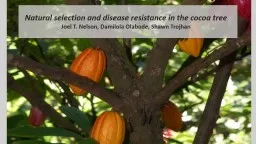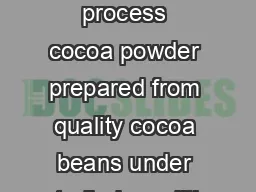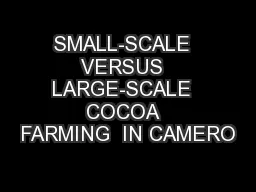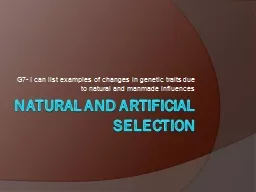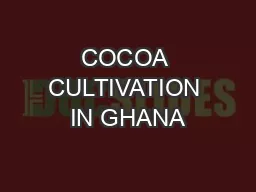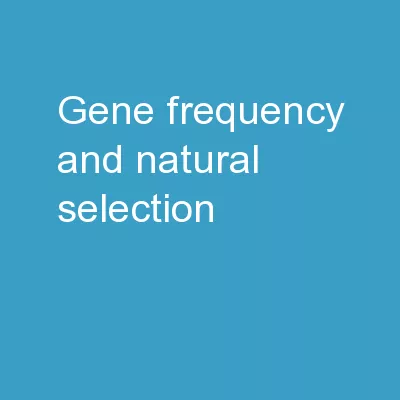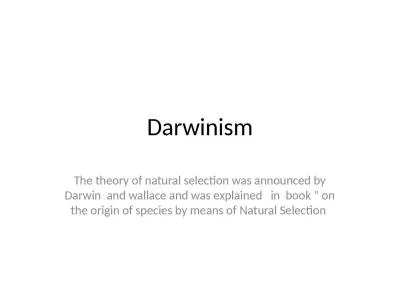PPT-Natural selection and disease resistance in the cocoa tree
Author : giovanna-bartolotta | Published Date : 2019-03-15
Joel T Nelson Damilola Olabode Shawn Trojhan Amazonian tree that has been cultivated for the production of cocoa Originally two main genetic clusters Criollo
Presentation Embed Code
Download Presentation
Download Presentation The PPT/PDF document "Natural selection and disease resistance..." is the property of its rightful owner. Permission is granted to download and print the materials on this website for personal, non-commercial use only, and to display it on your personal computer provided you do not modify the materials and that you retain all copyright notices contained in the materials. By downloading content from our website, you accept the terms of this agreement.
Natural selection and disease resistance in the cocoa tree: Transcript
Download Rules Of Document
"Natural selection and disease resistance in the cocoa tree"The content belongs to its owner. You may download and print it for personal use, without modification, and keep all copyright notices. By downloading, you agree to these terms.
Related Documents

